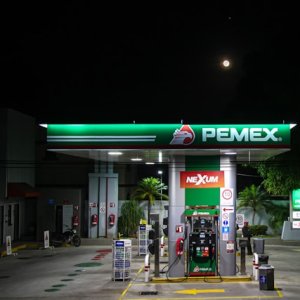How Might Russian-Ukraine War Impact Mexican Inflation?

STORY INLINE POST
Could the conflict between Russia and Ukraine affect Mexico’s inflation?
Before spoiling the answer, let me walk you through some facts and personal opinions in a clear and structured way.
For simplicity purposes, in this article I’ll refer to the European Union Member Countries (EU-27) and the United Kingdom as Europe.
Chapter 1 – Europe as a major gas producer
During the early ’90s, Europe was a major gas producer, mainly from the North Sea, the UK and the Netherlands. They produced around 65 percent of the total gas they demanded and imported the other 35 percent from different countries.
Over the last decades, gas reserves have been depleting and domestic production declined, reaching a production level of 20 percent of its natural gas needs. So around 80 percent of the demand is covered with imports from different countries.
This is an important shift in energy dependence for Europe.
Chapter 2 – Russian gas flowing to the West
With around 80 percent of its local demand being imported, Europe is the largest natural gas importer in the world.
It has been long enough since Europe has been importing Russian natural gas, but the current share is interesting and alarming: around 40 percent of the total imports flow from Russia through thousands of miles in pipelines.
This sounds like a high (and worrying) dependency on one foreign source.
Chapter 3 – Russia invades Ukraine
The conflict between both countries started publicly in 2014 when Russia annexed Crimea illegally. Tension has continued since then, until President Vladimir Putin’s Russia actively invaded Ukraine in February 2022, attacking airports, military headquarters and major cities. War has started and the world’s economy is shaking.
Months before the attack, late in 2021 when Russia began deploying big numbers of troops close to Ukraine’s borders, people started speculating and foreseeing apocalyptic scenarios around how Putin would react: Will Russia close natural gas pipelines, interrupting exports to Europe? Will there be damage to current operating pipelines through Ukraine or processing plants? Will Europe suffer a lack of natural gas to fulfill its demand? Will there be blackouts in major European cities?
With the war being a fact, all these potential scenarios might be real dangers for Europe, and the gas market has already shown its concern. Russian gas availability is in jeopardy.
Chapter 4 – Liquified Natural Gas
The most cost-efficient way to transport natural gas is by pipeline, but what happens if there’s no adequate infrastructure or there’s not enough gas production nearby to meet demand? There’s another way to transport this product, which is by cooling natural gas to a very low temperature (around -162°C) and changing its state to liquid. It’s a complex and costly process but makes it easier to upload to vessels and navigate the world to reach far away countries. This product is called liquified natural gas (LNG).
Chapter 5 - Demand and pricing volatility
With the world’s economy recovering from COVID-19 during 2021, Europe started increasing its natural gas consumption. Its natural gas supply constraints and the low storage inventories of the past year contributed to recent increases in US LNG exports to Europe.
Europe has been importing LNG for a long time now, mainly from Qatar, Nigeria and Algeria. In 2017, Europe started purchasing LNG from the US, in a very small share. Since 2019, this amount has continued to grow in an accelerated way. In 2021, the US became Europe’s largest source of LNG, accounting for 26 percent of all imports. In January 2022, the US supplied more than 50 percent of all LNG imports into Europe.
Supply challenges in Europe have led to rising regional prices of natural gas. European spot prices have suffered significant volatility since the second half of 2021. The European hub TTF spot price (Netherlands), which during 2019 and 2020 averaged less than 4 US$/MMBTU, peaked at 60 US$/MMBTU in December 2021.
Something very similar happened in Asia, where LNG prices have risen significantly.
This current LNG pricing and future curves in both Europe and Asia make it convenient for the US to increase LNG production to supply those markets.
Chapter 6 – US volatility affects Mexican gas prices
As in Europe and Asia, US natural gas prices have risen significantly during 2021.
Henry Hub averaged 2.3 US$/MMBTU during 2019 and 2020 and 3.9 US$/MMBTU during 2021 (a 70 percent increase). January 2022 closed at 4.38 US$/MMBTU.

This pricing volatility affects Mexican local gas prices significantly as 75 percent of the total gas consumed in Mexico is imported from the US. Industries, power plants and the transportation sector suffer this volatility directly, harming margins or forcing management teams to adjust their pricing strategy.
This is not new for Mexican gas consumers who have always been subject to the US market pricing. It gets more interesting when you analyse and understand the dynamic of the LNG and its important worldwide role in recent years, which create international arbitrage opportunities for the US.
US natural gas surpluses can either be exported to Mexico at Henry Hub pricing or be exported to Europe or Asia at a significantly higher price. A quick analysis might suggest the latter but before jumping to conclusions, let’s review the facts.
Chapter 7 – US LNG facilities and export capacity
US LNG export capacity has grown rapidly since 2016, mainly driven by the “shale gas revolution” and its advantage of cheap natural gas production, which can be sold at much higher prices in international markets.
Billions of dollars have been spent on building multiple liquifying facilities in the US, accelerating the increase in its capacity. In 2019, the US became the third-largest LNG exporter in the world. By 2022, when two important LNG units being built right now are brought online, the US will have the world’s largest LNG export capacity.

We can clearly see how important LNG export capacity is for the US, as it liquifies and exports more gas every year, capturing international market prices.
Chapter 8 – Conclusion
Both the COVID-19 recovery and the Russia-Ukraine conflict put pressure on Europe over natural gas demand and supply. European dependency on Russian gas cannot continue “as is,” so new suppliers are needed.
The US, with its growing LNG export capacity, appears to be a perfect partner to meet Europe’s needs, exporting more and more shipments every month.
US natural gas production is limited, and surplus gas competes between being liquefied for export to Europe or Asia and being exported to Mexico by pipeline with a completely different (and lower) pricing.
I think the US will most likely try to allocate all possible production to maximize its LNG export facilities, resulting in less gas available to Mexico, which might lead to higher local gas prices, affecting the whole natural gas value chain in Mexico for the long run.
This might not be just a temporary outlier. In my opinion, gas prices in Mexico will be adjusted to a “new normal” that is higher than the average from previous years.
Natural gas is an important input for very significant industries in Mexico, and if the natural gas price rises for good, the prices of both products and services might need to be adjusted, having a direct impact on Mexican inflation.
As I wrote in my previous article, Mexico needs to work toward the long term with projects to reduce foreign natural gas dependency. These projects will take time and effort, but the sooner we start, the better.
Sources: Energy Matters, EIA, Directorate Generale for energy for the EU
























